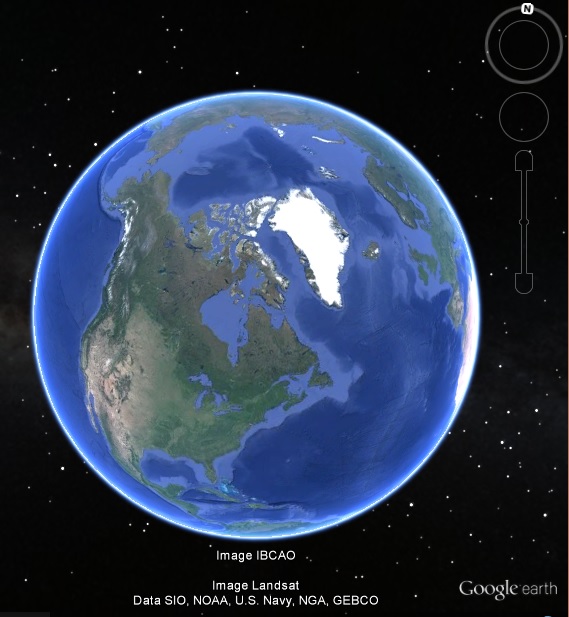INVESTIGATION 2
Is Greenland Ice Melting?
 The temperature of Greenland has risen by as much as 3°C (5.4°F), but how rapid is the ice covering Greenland melting? In this investigation you will use Google Earth to explore the melting of two massive glaciers––the Jakobshavn and Petermann Glaciers.
The temperature of Greenland has risen by as much as 3°C (5.4°F), but how rapid is the ice covering Greenland melting? In this investigation you will use Google Earth to explore the melting of two massive glaciers––the Jakobshavn and Petermann Glaciers.
You will use Google Earth to visually observe how our planet has been changing over the last few decades. You may have used Google Earth before, but for these explorations, you will be downloading .KML and .KMZ files. KML stands for Keyhole Markup Language and the .KMZ files are several .KML files that have been zipped.
You will be interacting with the Places window on the left of your screen. Once you open a .KMZ file, you will notice a folder with several files underneath. Each of these represents a layer and they are stacked one on top of another so that if all of the boxes of each file in a folder is checked, only the file at the top of the list will be visible. This means that you will need to check (to view) and uncheck (to hide) these files throughout these activities.
When you first download any files, they will be placed in your temporary places folder. However, when you close out Google Earth, you have the option to either save them or discard them. If you save them, they will go to the “My Places” folder. You will also use many of the tools at the top of the screen. Before you begin, make sure that you have Google Earth installed on your computer.
